GIANLUCA IACCARINO
Stanford University, USA
Gianluca Iaccarino has been an associate professor in Mechanical Engineering and Institute for Computational Mathematical Engineering at Stanford University since 2007.
He received his PhD in Italy from the Politecnico di Bari in 2005 working on numerical methods to simulate turbulent industrial flows. Afterward, he has been a postdoc at the Center for Turbulence Research of NASA Ames working on physical models for flow simulations and heat transfer, with emphasis on high-performance computing. In 2008 Prof. Iaccarino started the Uncertainty Quantification Lab working on algorithms to assess the impact of tolerances and limited knowledge on the performance predictions of engineering systems, such as wind turbines, hypersonic propulsion systems, low-emission combustors. Since 2009, he has served as the director of the Thermal and Fluid Sciences Industrial Affiliate Program a forum for technology transfer and interactions between members of the Stanford community and engineering corporations - GE, United Technologies, Honda, Enginsoft, Safran, Ansys, Dassault, Total are among the members. In 2010 Prof. Iaccarino received the PECASE (Presidential Early Career Award for Scientists and Engineers) award from the US Department of Energy. In 2011 he received an Humboldt fellowship.
Exascale Computing and Uncertainty Analysis: a Route to Green Energy
Exascale computing is envisioned as a key instrument for enabling scientic discovery and prediction of complex engineering systems. Beyond present limits two major roadblocks loom ahead: effectively pro-gramming heterogeneous computers and designing algorithms and computational strategies to take into account real-world uncertainty and variability. The US Department of Energy is funding a 5 years/$16M Multidisciplinary Simulation Center at Stanford to explore the boundaries of scientific computing in preparation for the launch in 2018 of a new class of machines 1000 more powerful than the present fastest supercomputer. Stanford Center's research portfolio will blend efforts in computer science, uncertainty quantication, and computational physics to tackle a challenging multi physics problem: the transfer of radiative energy to a turbulent mixture of air and solid particles. The context is provided by a relatively untested and poorly understood method of harvesting solar energy. Traditional solar-thermal systems use mirrors to concentrate solar radiation on a solid surface and transfer energy to a fluid, the first step toward generating electricity. In the proposed system, fine particles suspended within the fluid would absorb sunlight and directly transfer the heat evenly throughout the fluid volume. This technique would allow for higher energy absorption and transfer rates, which would ultimately increase the efficiency of the overall system.
The ambiguity surrounding exascale computer architecture complicates the software development activities; the Center aims at developing novel Domain-Specific Languages (DSL) that will afford enough flexibility to work on whatever computer model emerges as viable in 2018. Moreover, the extreme number of computing processors requires enhancements in computational resiliency: exascale systems consisting of millions of units will be prone to frequent failure. The talk will describe the Center's plan to construct a computational environment based on interoperable, fault-tolerant DSLs and the physical models that incorporate high-fidelity simulation and uncertainty quantification techniques.




